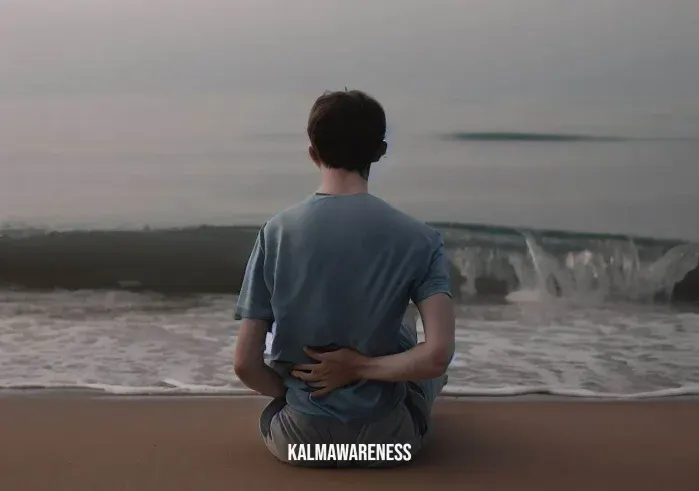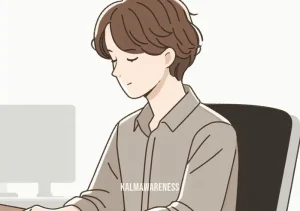Guided Meditation for Back Pain: Your Path to Relief and Relaxation
Back pain can become a debilitating condition that disrupts the tranquility of daily life. Fortunately, the art of meditation provides a potent tool to manage and potentially alleviate this condition. One technique that has proven particularly effective is guided meditation for back pain. It combines the power of mindfulness, relaxation, and self-discovery, opening avenues for spiritual growth and physical healing.
Understanding the Power of Meditation for Pain Management
“Pain is inevitable, but suffering is optional” – Unknown.
A fundamental tenet in many meditation practices is the acceptance and non-judgemental observation of sensations, including pain. Instead of attempting to avoid or suppress the pain, practitioners learn to observe it without getting entangled. This approach facilitates a mindful shift in the perception of pain, from an intrusive disturbance to an accepted sensation.
The Role of Visualization
Visualizing can be a powerful tool during meditation. The object of meditation need not always be the breath or mantra; it can be the pain itself. Envisioning the pain as a separate entity can create a mental gap between you and the pain, making it less personal and more manageable.
The middle pillar guided meditation is a particularly effective technique that combines visualization with energy work. Here, practitioners visualize a radiant pillar of light descending from above, permeating, and healing the body.
An Introduction to Guided Meditation for Back Pain
The technique of guided meditation for back pain combines various elements of mindfulness, visualization, and deep relaxation. It draws upon the knowledge of the mind-body connection to provide relief and healing.
- The process starts with finding a comfortable position. This could be seated, lying down, or even during a mindful movement session like yoga or tai chi. The critical point is to ensure minimal discomfort and maximum relaxation.
- The guided meditation will usually begin with a relaxation phase, helping to ease physical tension and mental chatter. This phase often employs breathing techniques, such as those found in the M-techniques.
- The visualization phase often follows relaxation. The mediator might be guided to imagine the pain as a color or shape, altering its characteristics, or visualizing healing energy flowing into the area.
- Finally, the meditation will end with a period of mindfulness, observing the new sensations in the back area without judgment or expectation. This process helps to solidify the changes made during the meditation.
We invite you to continue on this journey in the next part of the article, where we delve deeper into the techniques and benefits of guided meditation for back pain, integrating mindfulness into daily activities, and how it aids in personal growth and self-discovery. We will explore how such practices correlate with our inherent capacity to heal and nurture our bodies. Let’s delve deeper into the world of meditation and its transformational power for pain relief and overall well-being.

How Guided Meditation for Back Pain Promotes Self-discovery and Spiritual Growth
The journey of self-discovery often begins when we start paying attention to ourselves, our sensations, thoughts, and emotions. Pain, particularly persistent back pain, can be a powerful trigger that prompts us to turn our attention inward. Engaging with guided meditation for back pain offers a unique pathway towards self-discovery and spiritual growth, as we learn to understand and manage our pain.
The Mirror of Self-awareness
“Look in the mirror, what do you see?“ – It is a question often posed during introspective journeys. Pain can act as that mirror, reflecting back to us aspects of our mental and emotional state. In living beyond ourselves, we begin to realize that our physical state, including the pain we experience, is interconnected with our mental and emotional states.
Through guided meditation, we can tap into this connection. As we sit quietly with our pain, we gain deeper insights into ourselves, leading to self-discovery and ultimately, spiritual growth.
The Role of Mindfulness in Pain Management
Mindfulness is the practice of bringing non-judgmental awareness to the present moment. When applied to pain management, mindfulness can transform our experience. Through mindful tarot, for instance, we learn to observe the symbols of our lives, including pain, as messages guiding us towards deeper understanding and healing. Similarly, when we bring mindfulness to our back pain, we may begin to see patterns – connections between our pain and certain thoughts, emotions, or situations.
“Your pain is the breaking of the shell that encloses your understanding.” – Khalil Gibran
Deepening Spiritual Growth with Guided Meditation
Spiritual growth often involves the process of expanding our awareness and understanding of the self and the universe. In the practice of guided meditation for back pain, we are invited to connect with a greater source of healing. Whether it’s visualizing a soothing light or connecting with the 7 levels of existence, these practices can deepen our spiritual understanding.
Engaging in a dark night of the soul meditation during periods of intense pain can also be transformative. This practice can help us see the pain as a catalyst for spiritual growth and transformation, rather than just an inconvenience or suffering.
The Journey Towards Your Highest Self
As we continue to meditate and explore the depths of our being, we start awakening our highest self. This is the aspect of ourselves that transcends pain and suffering, embraces love and peace, and connects us to the wisdom of the universe.
In the next part of this article, we will delve deeper into the practical steps of performing a guided meditation for back pain. We’ll also look into how to incorporate meditation into your daily routine, the significance of breathing techniques, and explore ways to further your personal growth through meditation. As you continue this journey with us, remember that, “And remember, no matter where you go, there you are.”
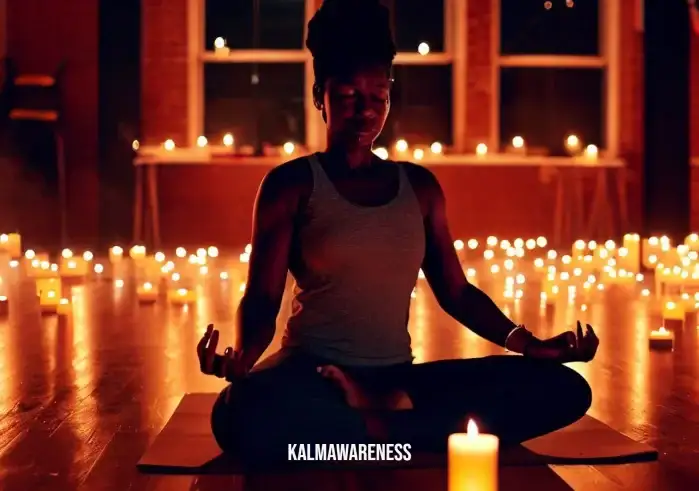
The Practical Approach to Guided Meditation for Back Pain
The realm of guided meditation for back pain expands much further than just relief from physical discomfort. It’s an avenue leading to higher personal growth, fostering mental resilience and spiritual awakening. Before we embark on this practical exploration, remember, “Don’t recognize myself in the mirror,” because through meditation, we are about to introduce ourselves to a transformed, pain-free self.
Step-by-step Guide to Meditating for Back Pain
Let’s venture into this enlightening journey with a systematic approach. Here’s a list-style breakdown of steps to perform a guided meditation for back pain:
- Find a quiet space: Choose a peaceful, serene environment where you won’t be interrupted.
- Comfortable posture: Sit in a comfortable position, keeping your back straight. You can use the adult chair technique for optimal alignment.
- Focus on breath: Close your eyes and take a few deep breaths. The Balloon Meditation Script can guide you in the breathing process.
- Body scan: Gradually shift your awareness through your body, observing any tension or discomfort.
- Visualize healing: Imagine a healing light traveling through your body, soothing your back pain.
- Observe and release: Acknowledge the pain without judgment and mentally release it, drawing from the It’s ok to wander concept.
How to Integrate Guided Meditation into Your Routine
Consistency is key when practicing guided meditation for back pain. The more frequently you practice, the more you will reap the benefits.
- Identify a consistent time: Choose a time that best fits your daily schedule. Perhaps an hour-long guided meditation in the early morning or before bed would be ideal.
- Choose a specific space: Designate a specific area in your home for meditation. Make it a ‘sanctuary’ that encourages a peaceful mindset.
- Set realistic goals: Start with shorter sessions, gradually increasing the time as your comfort and concentration improve.
- Keep a meditation journal: Document your experiences and progress using the Practice You Journal.
The Benefits of Guided Meditation for Back Pain: A Table Overview
| Benefits | Description |
|---|---|
| Pain Management | Regular guided meditation can reduce the intensity and perception of back pain. |
| Stress Reduction | By promoting relaxation, meditation helps lower stress levels, a common contributor to back pain. |
| Improved Sleep | As stress diminishes and pain is managed, better sleep often follows. Check out guided meditations for deep sleep. |
| Enhanced Self-awareness | Mindfulness cultivated through meditation heightens body awareness, helping identify and address pain triggers. |
| Personal Growth | Dealing with back pain mindfully can lead to questions for personal growth, prompting self-discovery. |
The subsequent section will explore the correlation between breathing techniques and back pain relief, as well as strategies to promote further personal growth. Stay with us on this journey, remembering that, “This is not your practice life.” This is your real life, and it’s time to live it pain-free.
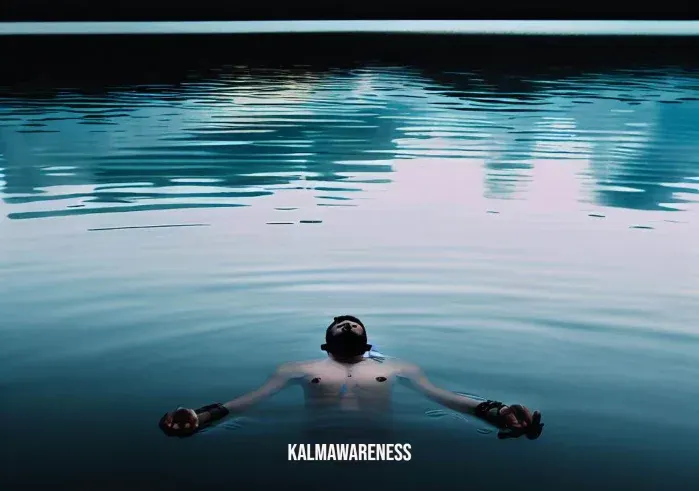
Delving Deeper: Breathing Techniques and Back Pain Relief
As we continue our exploration into guided meditation for back pain, we cannot underestimate the power of breathing techniques. They are the cornerstone of mindfulness practices, providing the means to achieve deep relaxation and relief from pain. This aspect of meditation is an important part of the journey towards understanding our real self and prompting transformation, in line with the principle that “At the end of the road, there’s always a mirror.”
The Link between Breathing and Pain Management
Focused breathing has a direct impact on our perception of pain. The rhythm and depth of our breaths influence the nervous system, relaxing the body and reducing stress levels – both essential factors in managing back pain. Mindful attention to breathing is one way we can harness the power of meditating on words of power, effectively altering our reality through focused intention.
Breathing Techniques for Back Pain Relief
Several effective breathing techniques can be part of your guided meditation for back pain, enhancing relaxation and alleviating discomfort.
Deep Breathing
Often referred to as diaphragmatic or abdominal breathing, this technique promotes full oxygen exchange, slowing the heartbeat, and lowering or stabilizing blood pressure. This approach reflects the wisdom of the Middle Pillar Guided Meditation, which emphasizes balancing and grounding through mindful breathing.
Box Breathing
Also known as four-square breathing, this technique involves inhaling, holding the breath, exhaling, and again holding the breath, each for a count of four. It is a powerful method to return to the present moment, helping you to “Look into yourself” and find a calm center amid pain.
Alternate Nostril Breathing
This technique, derived from yoga, involves alternately breathing through one nostril at a time. It’s believed to balance the left and right sides of the brain, promote relaxation, and reduce anxiety – all contributing to back pain relief. You can refer to the Mindful Tarot guide for more insights on mindfulness and balance.
These techniques highlight the transformative power of breath, affirming that “And remember, no matter where you go, there you are,” right in the heart of your healing journey. It’s a self-discovery process that makes guided meditation for back pain more than just a pain management tool – it’s a vehicle for profound personal transformation.
As we navigate towards the final part of this guide, we will explore how to customize guided meditation practices to suit your unique needs. We will also delve into advanced techniques for seasoned practitioners. “To thrive is to continue to evolve,” as the principle of Thriving vs. Surviving suggests. So, join us in the next chapter and continue your evolution towards a life free from back pain.
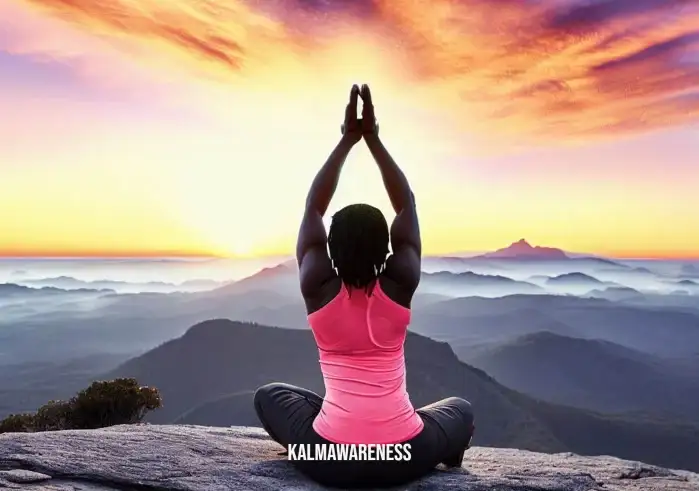
Personalizing Your Guided Meditation for Back Pain
In this final chapter of our guide on utilizing guided meditation for back pain, we will delve into the customizing of these practices to suit individual needs and preferences. Remember, this journey is not one-size-fits-all. It’s about self-discovery, self-awareness, and connecting with your authentic self. As you are guided by the living beyond yourself workbook, you will find a path that is unique to you.
Aligning Guided Meditation with Personality Type
Understanding your personality type can be a valuable tool in customizing your guided meditation for back pain. Different personality types may find certain meditation styles more effective and appealing than others. Meditation and personality type can give us insights into how to best align our practices with our individual inclinations.
| Personality Type | Preferred Meditation Style |
|---|---|
| Extroverted | Movement-based Meditations |
| Introverted | Silent, Solo Meditations |
| Sensing | Visualization Techniques |
| Intuitive | Guided Imagery |
| Thinking | Mindfulness Practices |
| Feeling | Loving-kindness Meditation |
Remember, the authentic self meditation script encourages us to find our unique way of healing and growing. These insights on personality type are not prescriptive, but rather offer guidance to help us understand and meet our needs.
Incorporating Elements that Resonate with You
Just as the individual pieces in a meditation basket contribute to a successful practice, incorporating elements that resonate with you can enhance your guided meditation for back pain. These can include:
- Music: Soft, soothing music can aid relaxation and focus during your meditation.
- Scents: Aromatherapy using essential oils can complement your meditation practice.
- Setting: A quiet, comfortable space can make your meditation experience more enjoyable.
- Objects: Crystals, rosary beads, or other objects can serve as a focal point during your meditation.
Remember to take advantage of the resources available to you, such as the hour-long guided meditation that can guide you through these different elements and help you create an experience that is uniquely your own.
Advanced Techniques
For seasoned practitioners, there are several advanced techniques that can be incorporated into your guided meditation for back pain. These include body scan meditations, which encourage you to focus your attention on different parts of your body, as well as journeying meditation and meditation focal point practices that can offer deeper relaxation and insight.
Remember, you are not just looking to ease back pain; you are also looking in the mirror, seeing what you truly are. This journey is a personal one, a quest towards understanding, healing, and growth.
In conclusion, guided meditation for back pain is not merely a tool for physical relief; it is a pathway to self-discovery, spiritual growth, and holistic well-being. It is a journey where we embrace our fears and transform them into our strength. It’s about finding balance, and with the right guided meditation practices, you can find this balance and live a life free from back pain.
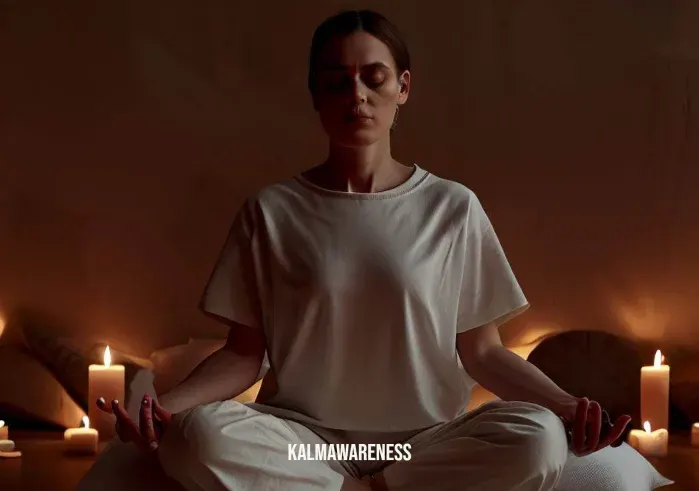
Mindful Strategies for Maintaining a Pain-Free Back
Having explored the core concepts of guided meditation for back pain, it is essential to turn our attention to the role of mindfulness in maintaining a pain-free back. This next chapter focuses on understanding the implications of daily habits, self-awareness, and the preventive aspects of mindfulness that contribute to mitigating the recurrence of back pain.
Recognizing the Impact of Lifestyle Habits
As the person in the mirror, we must acknowledge our daily habits’ impact on back health. Sedentary lifestyles, incorrect postures, lack of regular exercise, and inadequate diet are some factors that can aggravate back pain. In the context of guided meditation for back pain, it’s not just about symptom management; it’s about rectifying these detrimental habits.
One way of achieving this is through the adoption of positive resolutions. Be it a commitment to better posture, daily physical activity, or adopting a balanced diet, each step towards healthier living contributes to reducing the risk of back pain.
The Role of Self-awareness
Self-awareness is a critical component in managing back pain. The ability to look into yourself allows you to recognize the triggers that exacerbate your pain. It could be a particular movement, a stressful situation, or a lack of rest. Through the practice of guided meditation for back pain, you cultivate an increased awareness of your physical body and emotional state.
Coupled with the insights from the DNA activation symptoms and the mindful tarot, this self-awareness can prove to be an empowering tool in your journey towards a pain-free back.
Preventive Mindfulness Practices
“An ounce of prevention is worth a pound of cure.” – Benjamin Franklin
A key aspect of dealing with back pain is focusing on preventive measures. Adopting mindfulness practices such as yoga, tai chi, or meditate spiritfarer in your daily routine can help improve flexibility, strength, and posture, significantly reducing the chances of back pain recurrence.
Additionally, engaging in mental wellness activities found in the practice you journal can also significantly contribute to alleviating stress, a common trigger for back pain.
Incorporating Meditation into Daily Life
Regular practice of guided meditation for back pain can contribute to more extended periods of relief. Embedding the habit of meditation into your daily routine ensures consistency and gradually enhances the benefits of the practice.
In conclusion, while guided meditation serves as an effective tool in managing back pain, mindful lifestyle changes and preventive strategies provide a holistic approach to maintaining a pain-free back. In this journey, we must remember that no matter where you go, there you are, and the power to overcome back pain lies within us.
In the upcoming final chapter, we will delve into advanced guided meditation techniques for back pain, understanding their application, and exploring the potential for deeper relief and healing.
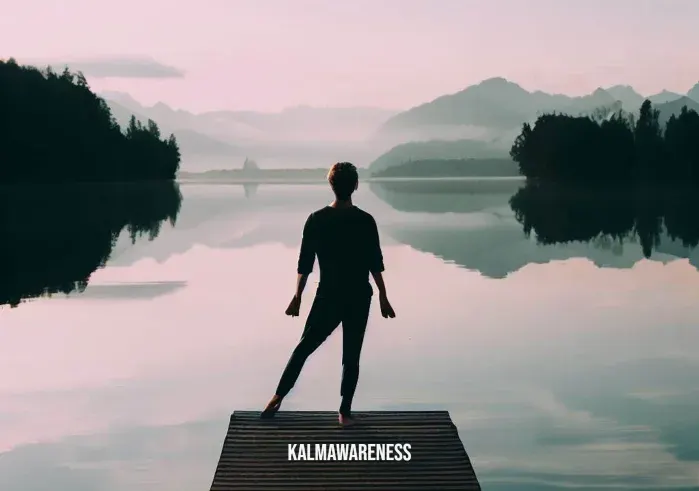
Light at the End of the Back Pain Tunnel: Embracing A Future Free of Discomfort
After traversing the realm of mindfulness, guided meditation for back pain, and preventative strategies, we stand on the precipice of our journey, ready to embrace a future without back pain. This final chapter focuses on drawing together all the threads we’ve unraveled, casting a light on how they can be integrated into everyday life for a pain-free future.
Mindful Living: A Life Choice
Our first port of call is the exploration of how we can incorporate everything we’ve learned into our daily routine. Every person’s journey is unique, just as every labyrinth has a unique path. Implementing guided meditation for back pain management isn’t a one-size-fits-all solution; instead, it’s about adapting these principles to suit your individual needs.
A healthy and mindful lifestyle isn’t something we switch on and off. It’s a continuous and committed journey of growth and understanding. As we’ve previously explored in the wise heart chapter, integrating these practices into daily life requires patience and persistence.
Learning, Unlearning, and Relearning
A significant aspect of this journey involves the process of learning, unlearning, and relearning. We learn about new methods to manage back pain, unlearn detrimental habits that contribute to our discomfort, and relearn healthier ways of living. The novice to master progression encapsulates this beautifully.
Holding on to Hope and Confidence
“With realization of one’s own potential and self-confidence in one’s ability, one can build a better world.” – Dalai Lama
It’s crucial to maintain hope and confidence on this journey. Back pain can be debilitating and draining, but through techniques such as guided meditation for back pain, we’re taking the power back into our hands. Each time you practice loving-kindness meditation, you’re taking a step towards a future free from discomfort.
The Path Forward: Ongoing Learning and Practice
As we wrap up this guide, it’s important to note that your journey doesn’t end here. In fact, it’s just the beginning. We’ve provided a foundation, but it’s up to you to build on it, using resources like the awareness practice as tools to deepen your understanding and efficacy.
Conclusion: Embracing a Future Free of Back Pain
You’ve embarked on a powerful journey, one that empowers you to manage your back pain effectively. Remember, the answers lie within you, and every small step brings you closer to a life free of discomfort.
We hope that our exploration into guided meditation for back pain has shed light on your path towards relief and healing. It’s a privilege to have been part of your journey. We invite you to explore other enlightening topics in our KalmAwareness magazine, further empowering you on your journey of wellness.
And remember, as we’ve learned in the wise heart, “You have within you right now, everything you need to deal with whatever the world can throw at you.” Your journey towards a pain-free future starts here.
Namaste.
